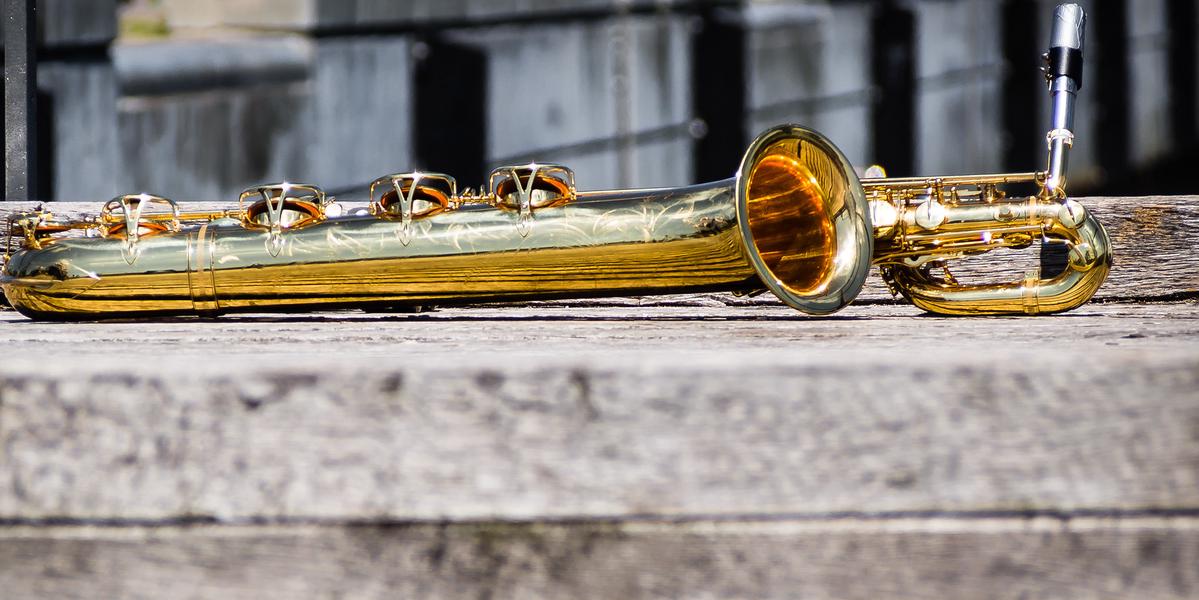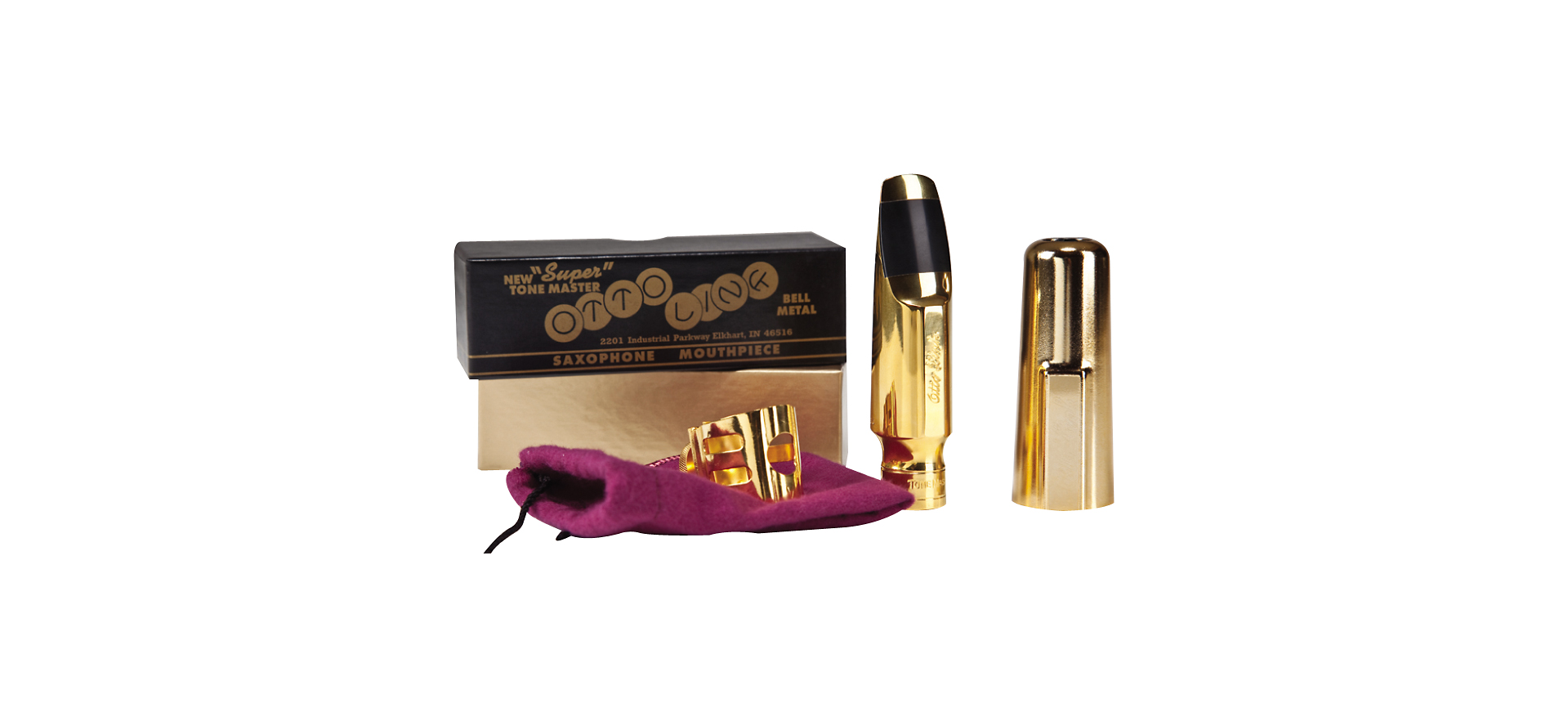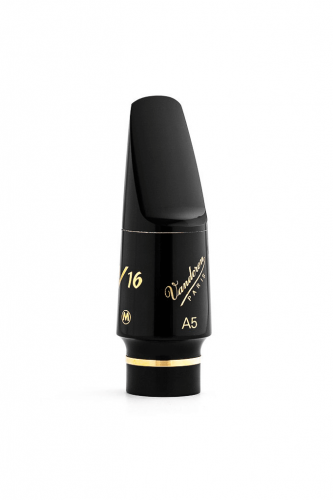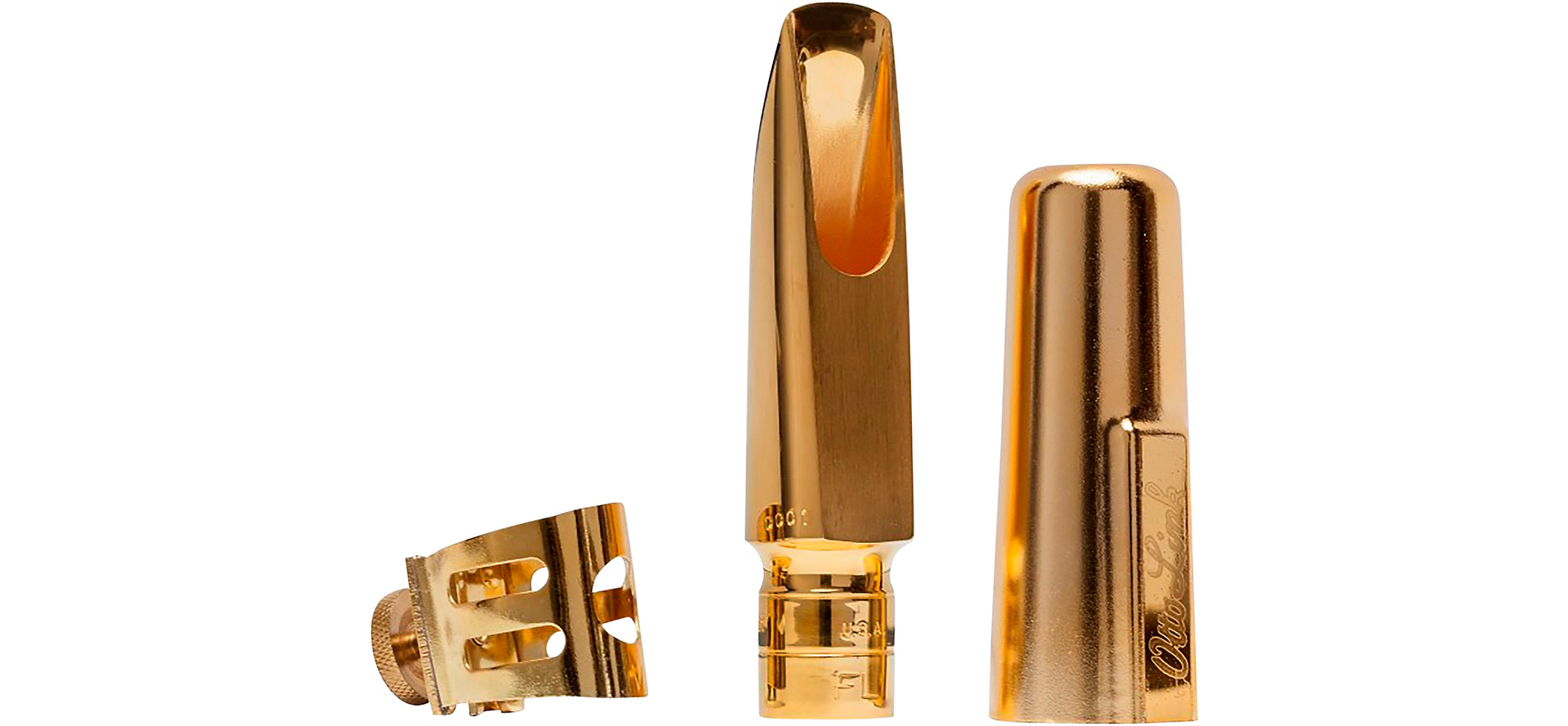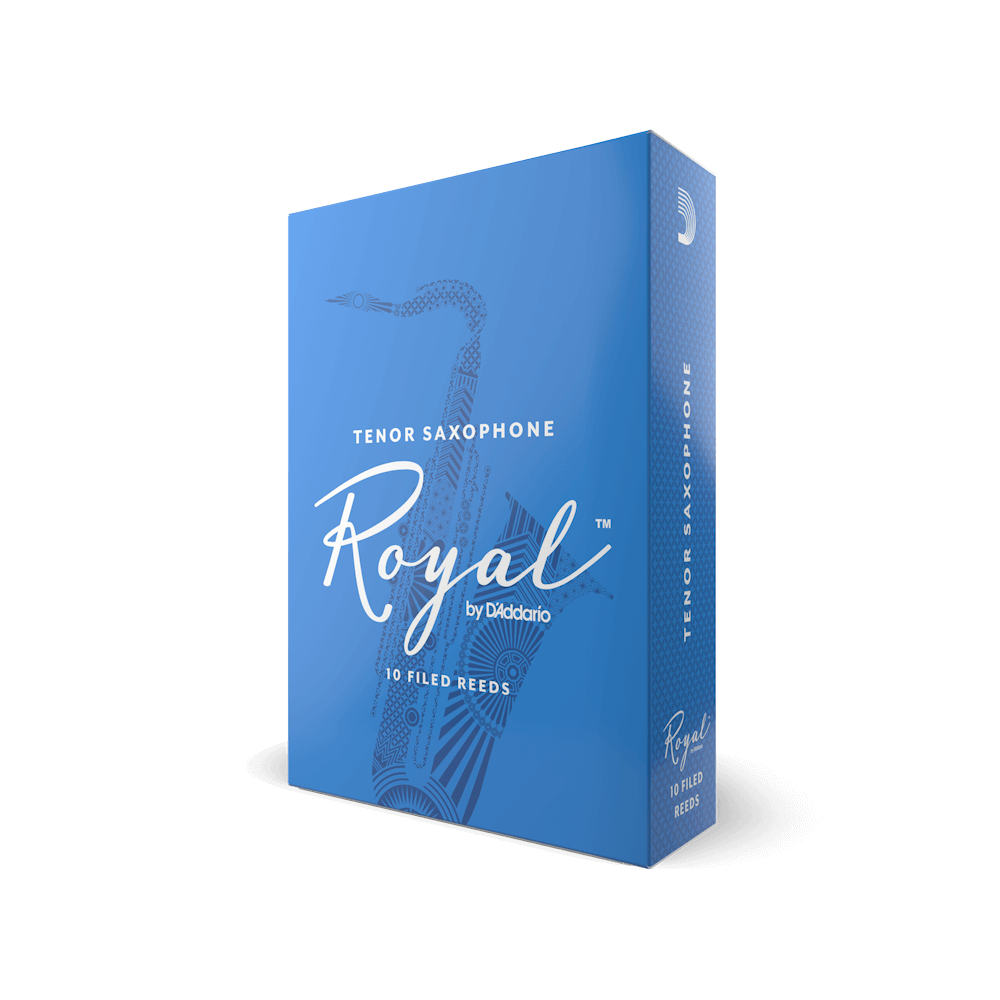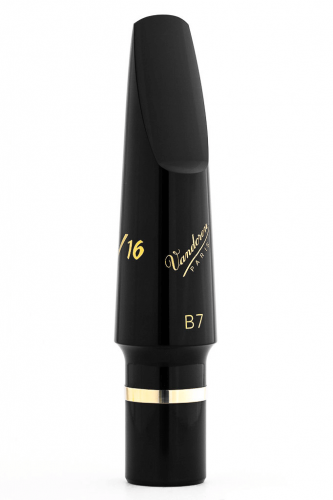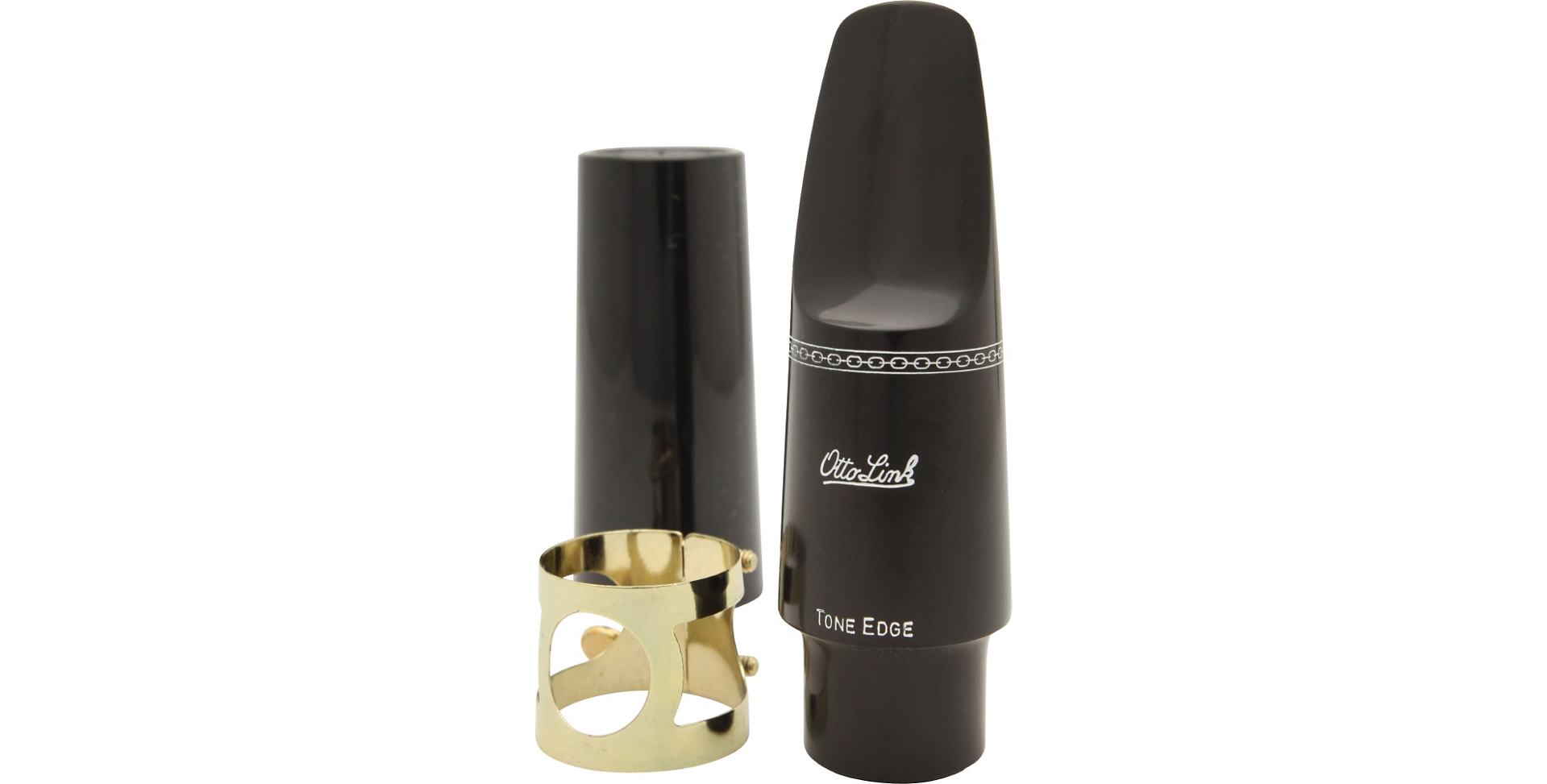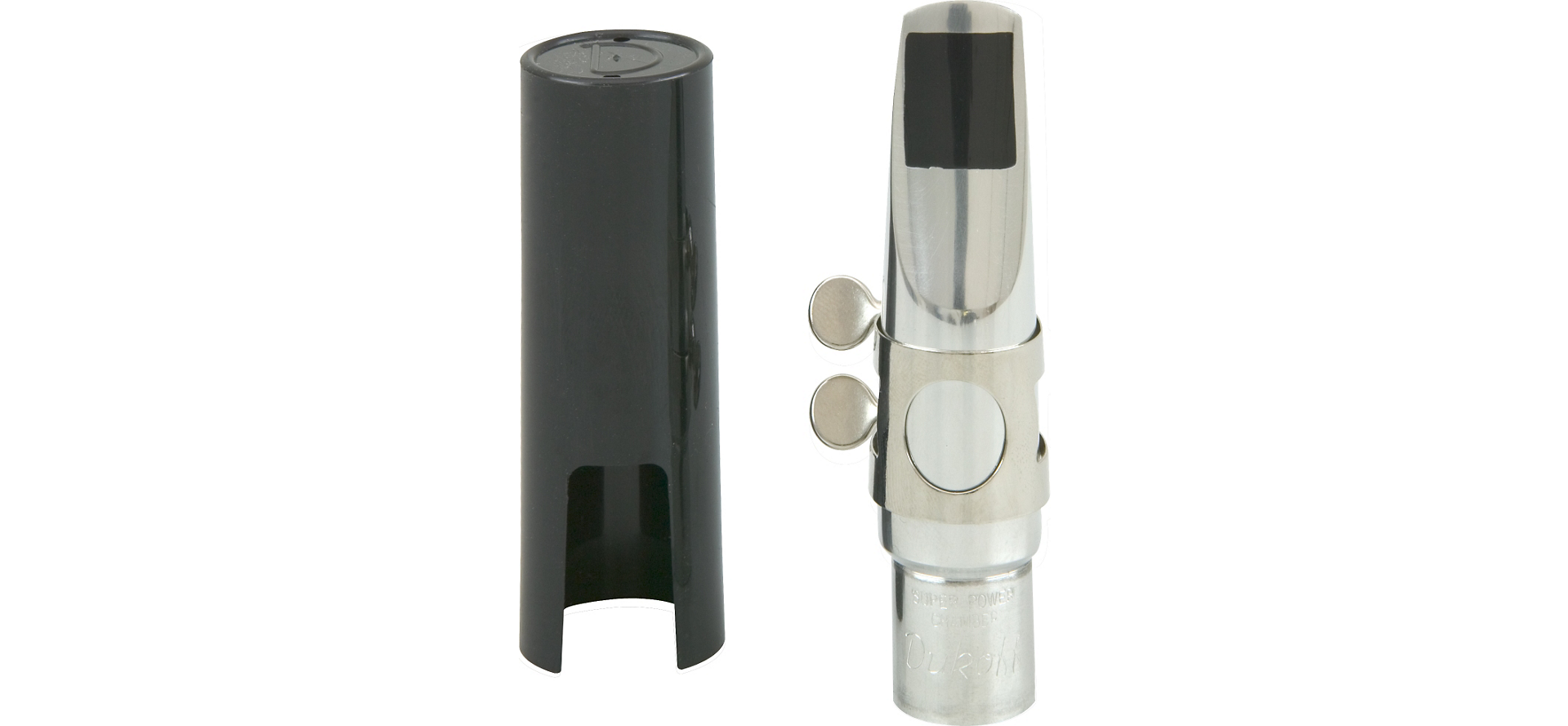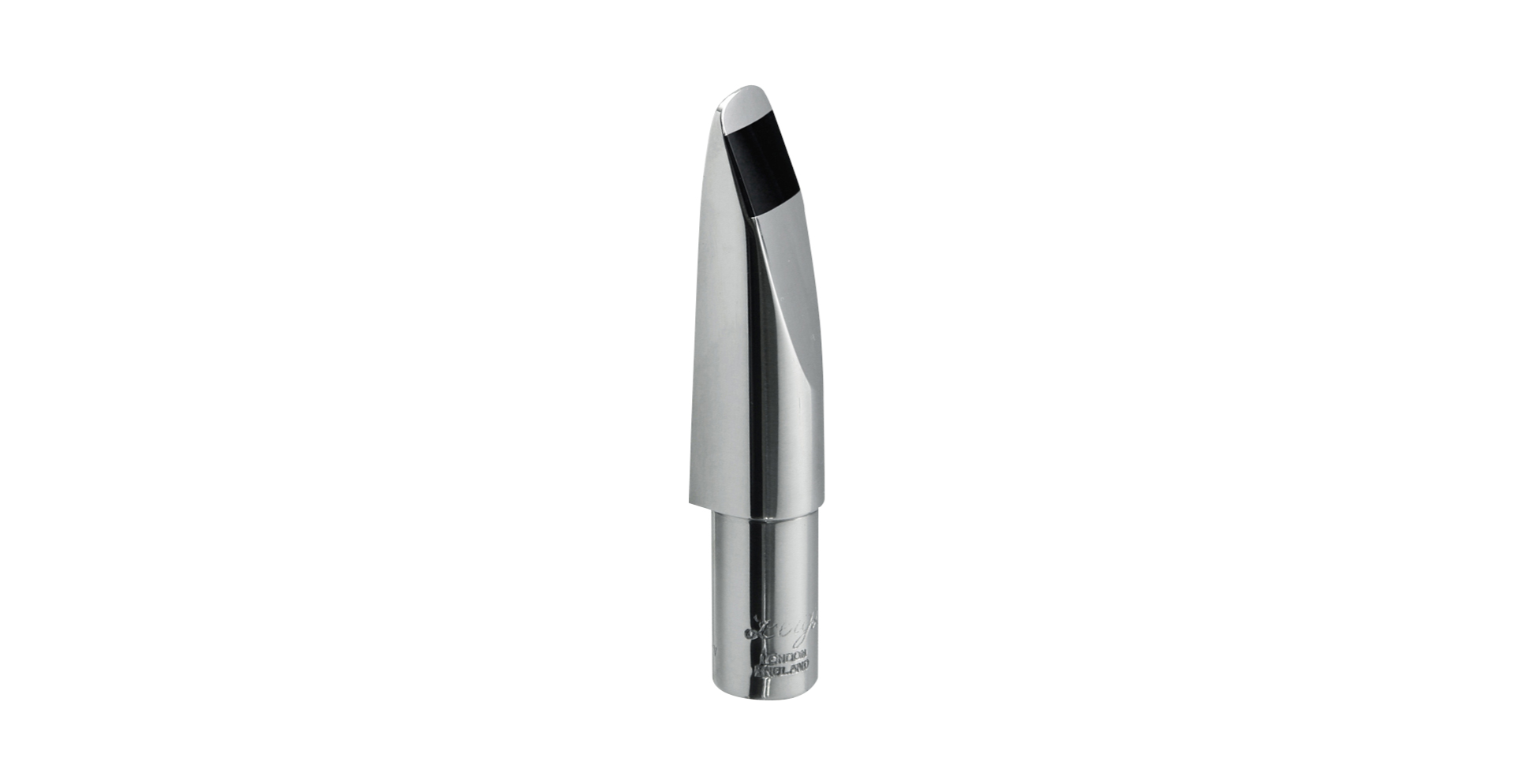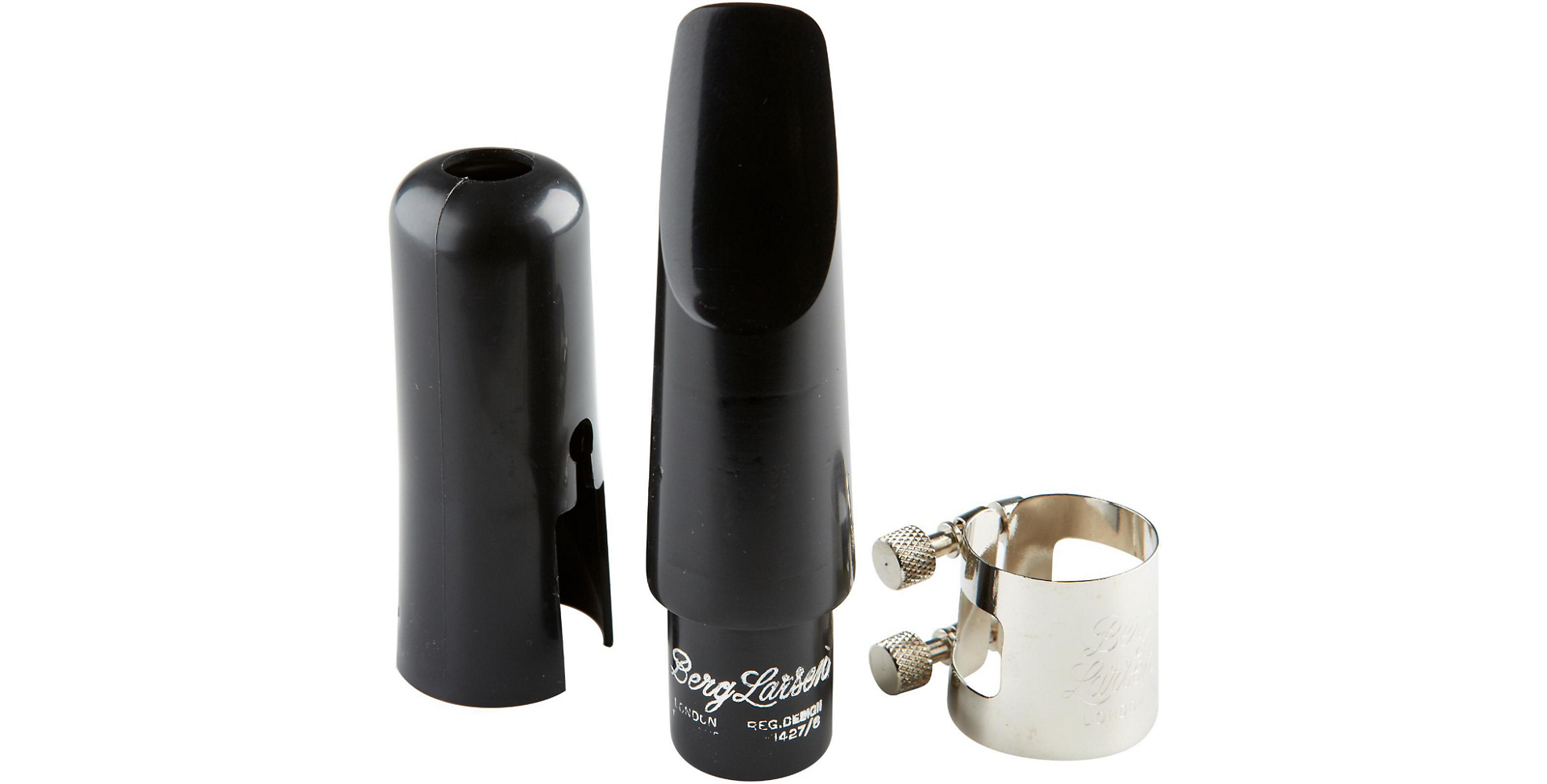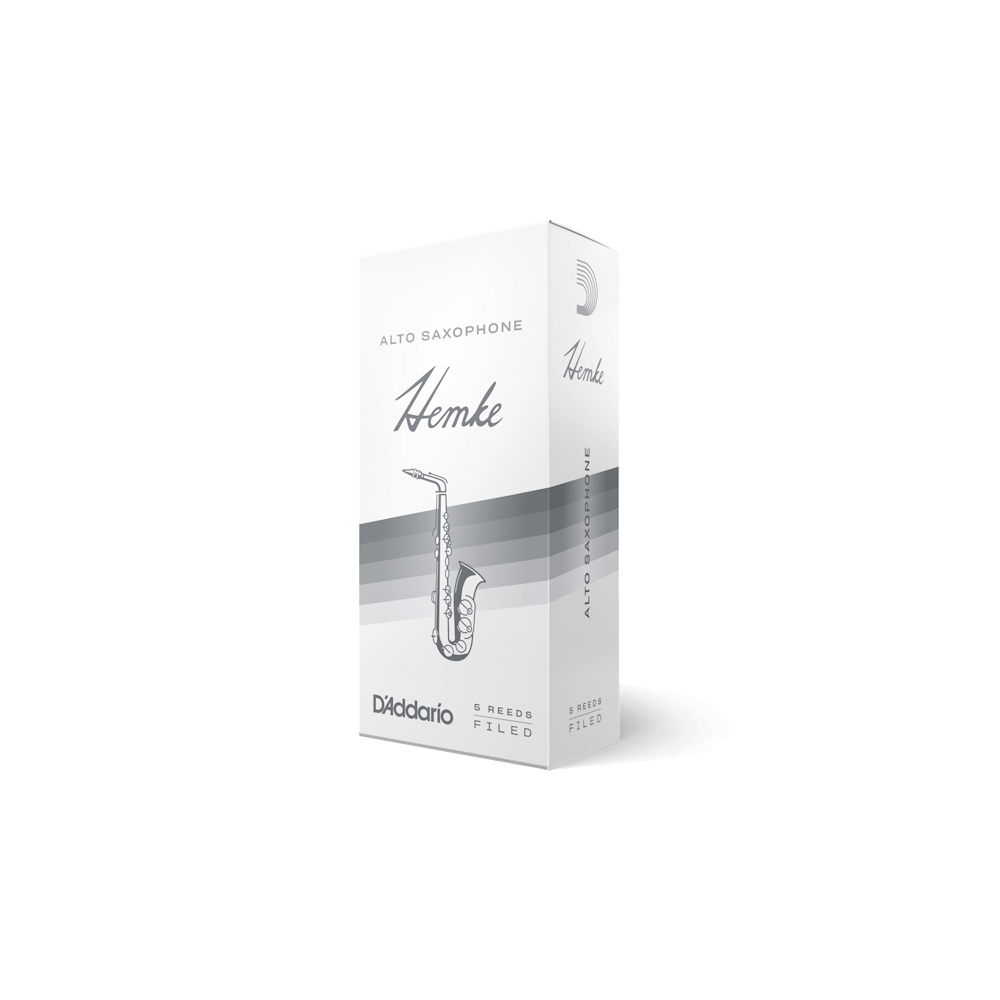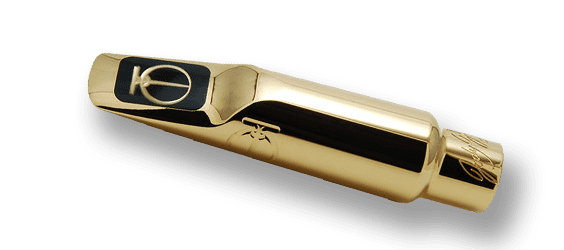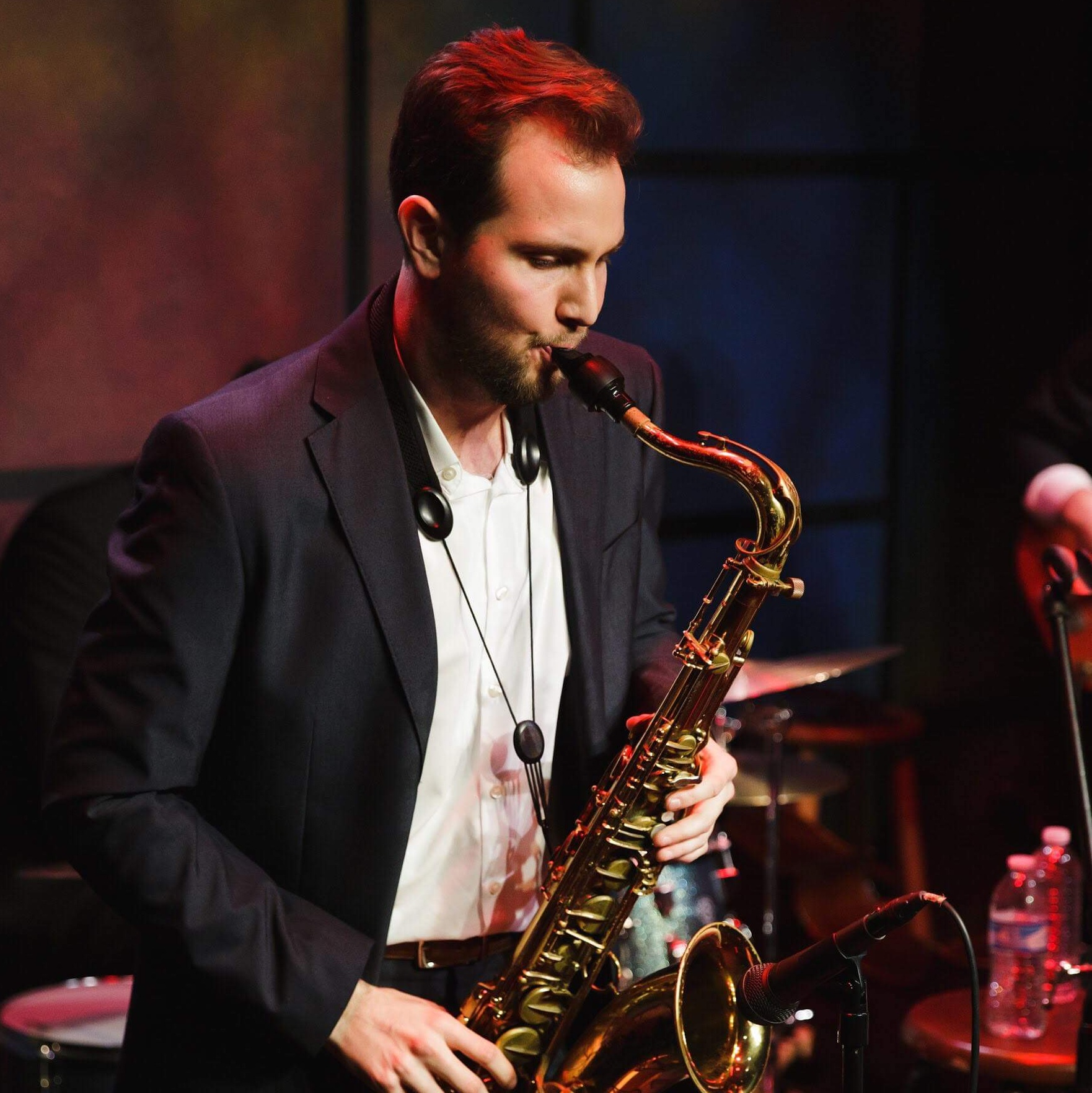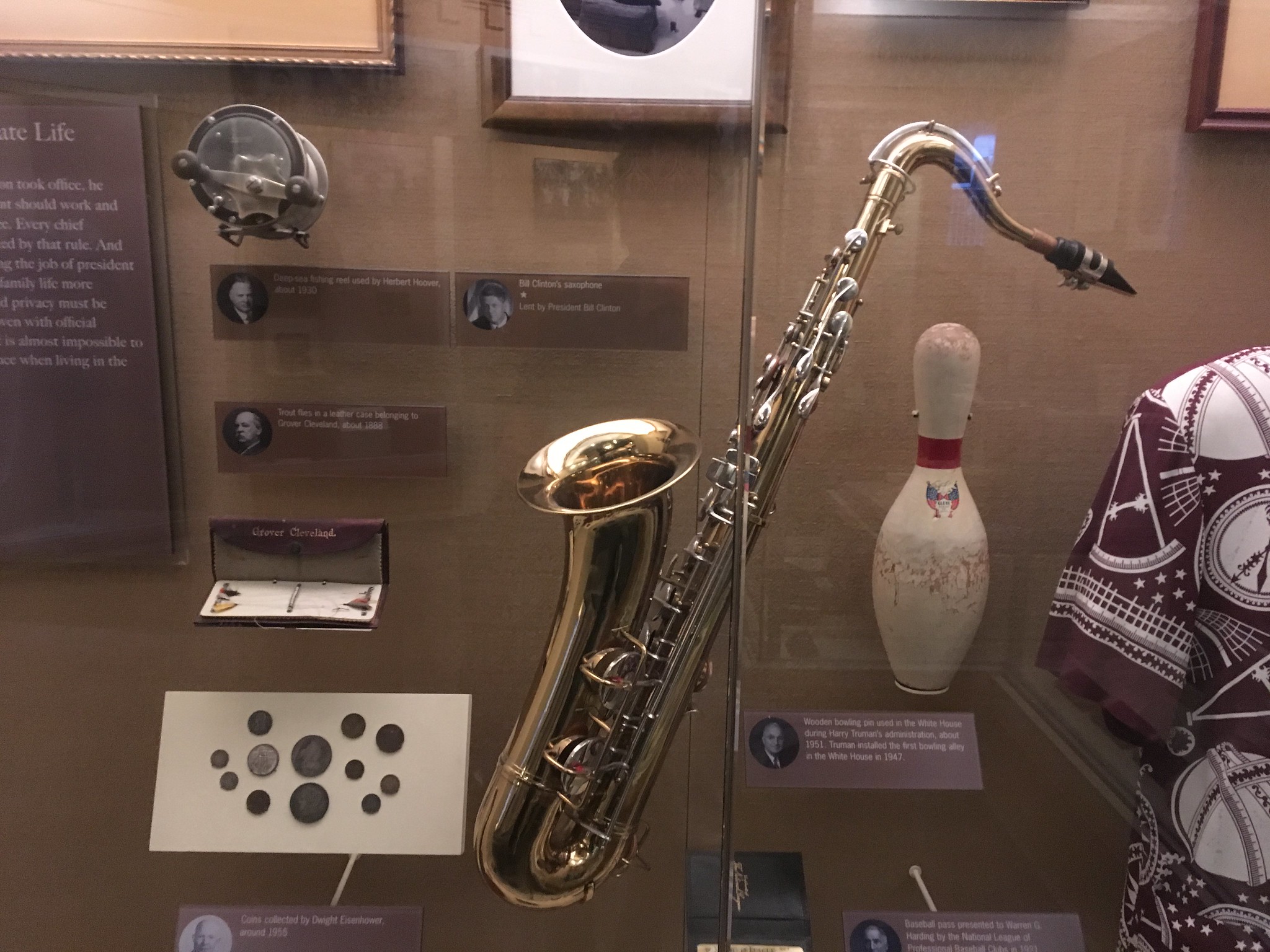While the concept of evolution in nature has been debated on since its inception, one form of evolution that cannot be denied is that of the saxophone.
At first glance, a saxophone from 2021 would look very similar to vintage saxophones built by Adolphe Sax in 1846. But, if you were to play it or even just look more closely, you would quickly find it to be wildly different. In pretty much every aspect from body, to neck, mouthpiece, and even reed, these two saxes are two different animals.
For an example of an old horn, here’s Chris Potter making an early saxophone sound just as easy to play as his everyday horn.
In this article, we’ll be exploring the various changes that have been made to the various different aspects of the saxophone, i.e. ergonomic, mouthpiece, reed, and ligature design, and how these changes have related to the styles of music that ultimately caused these changes.
First Generation
The original saxophone family started out with 14 different types, split into two major groups each, and spanned a range from sopranino all the way down to contrabass with four different keys. Fortunately for both the composers and musicians alike, only 5 of the 14 instruments would become fairly common in the music scene.
The particular music scene that the saxophone really grabbed was not the type of music that Adolphe Sax had intended for his instrument to play. Sax was a flute and clarinet player from a family who built and sold instruments and wanted to invent an instrument that would have the technical ability and general tone of a woodwind, but with the projection of a brass instrument. He had every intention that the instrument would become an important piece of the marching band instrumentation.
Rather than become the marching band juggernaut that Sax wanted it to be, his saxophone would find its true home only after transitioning from the few French marching bands that had accepted it. This home was that of the earliest jazz bands popping up around New Orleans like modern-day food trucks. This association with jazz would help to guide its development throughout the years from where Sax had begun to how saxophones are currently designed.
Early-Era Jazz
The modest beginnings of jazz centered around the center of New Orleans, and would be the birthplace of the first saxophonist to be considered a masterful soloist. His name was Sidney Bechet.
Bechet was a pioneer of the soprano sax, and was mostly seen with his trusty Buescher Tru-Tone. Built in 1924, the Tru-Tones were some of the earliest big-name instruments and in contrast to the sopranos of today were only sold in a solid neck layout. These sopranos were limited in design by the technology of the day and were notoriously hard to get in tune.
Thus, his ascension in the jazz world as a masterful musician was doubling impressive, and his playing should be admired that much more.
Another famous early jazz saxophonist was Coleman Hawkins. Predominantly a tenor sax player, Hawk (as he was affectionately called) was a game-changer as he was the first to bring the tenor forward into the spotlight as anything other than just another horn to fill out the woodwind section. While Bechet’s trademark sound was wild and “hot,” Coleman’s, while similarly strong and rhythmic, maintained an air of beauty that was bolstered by his expert use of harmonic devices to propel his solos forward.
As easy to pick out on an album as Stan Getz (and we’re definitely going to get to him later!) with just as personal of a sound, Hawk was one of the first fanboys of the Selmer + Otto Link combo. That’s right, even before Coltrane seemingly made that combination into something of a holy grail, Coleman Hawkins was using it to huge success.
Arguably Coleman’s defining recording, his 1939 version of “Body and Soul” cemented his place as the father of the jazz tenor sax, and is still one of the best saxophone centric songs of all time.
As Hawk had quite a few years on Coltrane, his preferred mouthpiece of choice was actually the first model of Link to come out. It was called The Master Link. After a few customizations to help make it fit into his play-style a bit better, the company would take his personal dimensions and make it into a signature model called the “Hawkins Special.” It had a very low rollover baffle, an absolutely massive chamber, and a small tip opening paired with a long facing. Unlike many artists now, Hawk was indiscriminate in his Selmer preferences, starting with Selmer Balanced Action and eventually upgrading to the Mark VI when it eventually was produced.
Finally, we’re at the point where we talk about possibly the most important sax player of jazz history, Charlie Parker.
Parker would not only revolutionize the saxophone but also jazz music as a whole with his incredibly fast and harmonically perfect runs that he backed up with his bright but beautiful tone. His speed demon style was just the nail in the coffin that saxophone designers of the time needed to get them to try and truly fix the often laborious left-hand pinky stack, home to the G#,C#,B, and Bb keys.
Unfortunately for "Bird," as he had come to be known because of his bird-like playing, Parker never truly had the ability to try these new changes. This was mainly due to his preferred horn, the King Super 20, not being sold with the updated pinky stack until the 50s. Although Parker wouldn’t pass away until 1955, by the 50s Bird's drug addiction had really gotten the better of him. This sadly caused him to sell whatever horn that he had with him just to keep his addiction fed.
While he was playing whatever saxophone he could get his hands on towards the end of his life, he supposedly never sold his mouthpieces. His most iconic mouthpiece was his stark white Brilhart Tonalin Streamline, a mouthpiece that was designed to have a smaller chamber than normal Tonalin models. They have a similarly bright and thinned out-sound that worked perfectly with Bird's light, flittery style of playing.
In his prime, however, Parker was putting out landmark recording after landmark recording, with entire albums becoming part of the rising jazz standard repertoire. Touted by Bird himself as the pinnacle of his playing, “Charlie Parker With Strings” has since become a universally revered piece of American art.
Post-Bop
With the fall of bebop came the rise of other various “hot” styles of jazz. This became known as the Post-Bop era, and this point in time was when the development of saxophone gear really started to blow up.
Nothing would exemplify this change better than Tenor players Wayne Shorter and Benny Golson.
Both were incredibly technical players with vocabulary that was deeply rooted in Charlie Parker’s music. With their health being considerably better than their idol’s they were both able to enjoy the improved ergonomics of the Selmer Mark VI, and later in life would go on to move to the modern Reference 36 and 54. These Reference horns are modern-day saxes meant to harken back to the sound of the Selmer Super Balanced action and the Mark VI, while still retaining the improved intonation and ergonomics that modern horns have.
More interestingly, these two sax giants were some of the earliest proponents of large tip openings. Whereas most saxophonists might have had their tenor sax mouthpieces opened up so that the distance between the tip and the reed was at most a 6* around 100 millimeters, both Shorter and Golson had customized their Otto Links to be far larger; with a 10* for Shorter and somewhere around a 9 for Golson, these mouthpieces helped to give them extremely massive sounds.
The latest aspect of the saxophone that began to be singled out as important to helping to nurture an identifying sound were the reeds!
While both Wayne and Benny would use tons of different types of reeds throughout their careers, their reed sizes were quite different. Wayne Shorter would use a softer reed in tandem with his large tip opening, a concept that became very typical for any artist using a substantiation tip opening. Benny Golson, in contrast, would use a tree trunk thick size #6 Rico reed. These reeds were so stiff that they had to be custom made for him as Rico had never offered anything larger than a size #5 before and since. (For reference, most saxophonists don’t go above #3 1/2
Cool Jazz/West Coast Jazz
On the opposite end of the jazz spectrum from Post-Bop and the various sub-genres that fit inside of it, you have cool jazz (or West Coast Jazz if you were based in LA).
This style of music was characterized by its smooth, aloof sound and a noted lessened influence of the blues. Due to its focus on a gentler sound and beautiful lyricism, cool jazz was also incredibly popular and two particular artists that perfectly encapsulated this style were Stan Getz, and Gerry Mulligan.
Gerry Mulligan was and still is the most well-known bari sax player to play the instrument and his light but melodic way of soloing was all over the airwaves; a feat for an instrument normally relegated to a support role.
His breakout role was taking part in Miles Davis’ “Birth of The Cool” album, playing bari on every single song on the record
Miles Davis - Boplicity (Gerry Mulligan solo at 0:58)
His easily identifiable sound has been sought after for decades by various artists, and while Mulligan didn’t talk about his setup too often, we fortunately have enough interviews and anecdotes from other sax players who worked with him to gather his actual setup!
He was very different from many of the musicians we’ve already covered. While many of the later-era saxophonists began to use mouthpieces with larger and larger tip openings, Mulligan was one of the few people that stuck to the old-school method of using a relatively small tip-opening, measuring to only about a 5* whereas most Bari players of around that time started using tips around 8* or even bigger. He also liked to use #4 reeds because according to him, “Using a stiffer reed eliminates a lot of the buzz from the sound.”
Possibly the most widely known saxophonist on this list excluding Kenny G (Yes THAT Kenny G, we’ll be getting to him later), Stan Getz tried tons of different brands and materials. However, he too followed the old-school combination of hard reeds with a smaller tip opening.
His most iconic albums were recorded with an Otto Link Hard Rubber mouthpiece with only a 6# tip opening. These mouthpieces had a decent sized rollover baffle, scooped sidewalls, and a medium/large chamber. All of these factors in combination with his #5 Vandoren reeds in a way that enabled him to get a sonically compact sound, that had a beautifully pure sound to it that naturally had no grit or airiness to it, fitting perfectly in with the cool jazz style. His sound even fit into the bossa nova style that he would have a large part in bringing into the American music scene.
A perfect encapsulation of his beautiful tone and style that made him such a famous jazz saxophone player came with his team up with Antonio Carlos Jobim on “The Girl From Ipanema”.
Fusion
The 70s and 80s brought about the rise of tons of different sounds both acoustic and electric. From the proliferation of pedal boards, to new recording techniques that gave us the stereotypical 80s kick drum, one thing was certain; saxophonists had to compete to be heard more than ever before.
Fusion was a mixture of 60s era Post-Bop jazz, and the rock bands that featured prominent horn sections during the 70s; it also used similar instrumentation as the latter, and required the horn(s) of the band to really project strongly.
There were a few saxophonists who set the tone so firmly for the genre that it would take decades for the effects to begin to wear off.
First up, let’s discuss the ever-present David Sanborn.
A giant alto player who’s typically the shortest person on stage, Sanborn helped to shine the light on smaller chambered, high baffle mouthpieces. With his trusty Dukoff D7 Super Power Chamber in hand, he was able to have enough projection and brightness to cut above the electric guitars, bass guitars, and electric keyboards/organs that many bands were using during the 70s and later into the Fusion era of jazz of the late 70s and 80s.
Using these Dukoff mouthpieces was essentially like turning up the volume knob on your favorite guitar without having to use any extra electricity! If you’re looking to brighten up your sound and amp up your projection to fit into an electric setting (or just because you want to!), the best option for modern-day alto players would be the current piece that Sanborn uses now; Drake’s David Sanborn Signature Model is based on his old piece but with a better build quality and improvements.
Lenny Pickett, noted tenor saxophonist from the Tower of Power band, also was a huge fan of this new trend of high baffle, small chamber mouthpieces however his brand of choice was not a Dukoff but rather a metal Berg Larson!
His Berg Larson was actually the same type and tip opening as jazz master Sonny Rollins’, this being a 130 (the approximate equivalent of a 10*+ opening!), in contrast however was the baffle height. While Sonny used what Berg Larson called a #2 baffle which they considered not super big but still substantial, Lenny used a #0 the highest baffle that was offered.
Always one to be unapologetically himself, during his time as a full time member of ToP, he played the lesser-known King Super 20 saxophone. While not as all concurring as the Selmer Mark VI, the King did excel in one thing, POWER; these saxophones were known to peel the paint off of the walls of clubs wherever they went.
Even more unique is his reed choice. Instead of using tenor saxophone reeds like a normal person, Lenny uses Bass Clarinet Vandoren Blue Box classical reeds. This likely only works because the Berg Larson that he uses is extremely narrow, and with bass clarinet reeds coming in just a few millimeters skinnier than normal tenor reeds could help make that mouthpiece really speak. Pickett also was known for his insane high note abilities and the different vamp dimensions of the bass clarinet reeds most likely help him get those notes out easier and more consistently.
With his unique ability to play in the extreme upper ranges of the saxophone and his very tasty jazz licks, Lenny went on to become synonymous with sketch comedy as the music director and lead sax player of the Saturday Night Live band.
Gospel/Smooth Jazz
After the advent of fusion, and with big mainstream hits such as Herbie Hancock’s Watermelon Man and Cantaloupe Island, it was always destined to lead to a return to the commercialization of the genre. Leading the charge towards the mainstream were saxophonists Kenny G and Grover Washington.
Based heavily in the blues and gospel style, Grover Washington was one of the first to bring a blend of these sounds and add a touch of simplicity and soul that helped to make his playing and original compositions. He had this massive, all-encompassing tenor sound completely at odds with the focused sound of Stan Getz, and the screaming sound of Lenny Pickett. While he also used a Berg Larson with a 130 tip opening and size #0 baffle, his personal sound and the fact that he used a hard rubber mouthpiece helped to produce such a unique sound, capable of cutting through the electric keyboards and guitars that he played with, while at the same time having a huge, spread tone.
Regardless of whether or not you have sought out Washington as a player, you doubtless have heard his music. He would collaborate with Bill Withers to write and perform on the universally loved song “Just The Two of Us”
The top dog, and easily the first name that comes up when thinking about Smooth Jazz and a household name, is Kenny G.
Full name, Kenneth Gorelick, G was a hugely popular smooth jazz saxophonist and a force from the 80s all the way even into the 2010s. With hits like “Songbird” and “Forever in Love” Kenny used his biggest strength, his beautiful soprano tone, and would continue to use it throughout his entire career to great success.
The fact that he became known and loved for his soprano tone was actually quite an accomplishment, as every other famous soprano recording up to that point was more famous because of the vocabulary or composition rather than the actual tone of the instrument. For example, most people would never really call the soprano of John Coltrane actually beautiful and soothing.
He was able to attain this soprano sound by using a vintage Miami Dukoff D8 (D8 referring to the tip opening). This is a bright, high projection mouthpiece with a small chamber, flat sidewalls, and a medium sized step baffle. While his mouthpiece is a brighter design, he likes to balance it by using the darker sounding Hemke reeds that are favored by classical and more old-school jazz artists.
To Sum Up
When looking at the saxophone players on this list, it’s fairly easy to see patterns start to appear. At the beginning, saxophonists largely used small, unmodified mouthpieces with their large bore Conn and Buescher horns. However as time went by, and players began to up their technical skills, the horns got skinnier and skinnier in order to help facilitate these fast movements and would only begin to get larger again once intonation began to take more and more priority. Similarly, once saxophonists began altering their own mouthpieces in order to open them up to allow for more airflow and easier blowing, established brands began to offer larger and larger sizes, with some people taking it to the extreme and ending up with tip openings twice as big as what used to be the maximum.
However, at the end of the day, these patterns can only be used as guidelines; after all, even among the artists on this list there are exceptions. If you can find something that you truly feel comfortable with, that is all that really matters.
